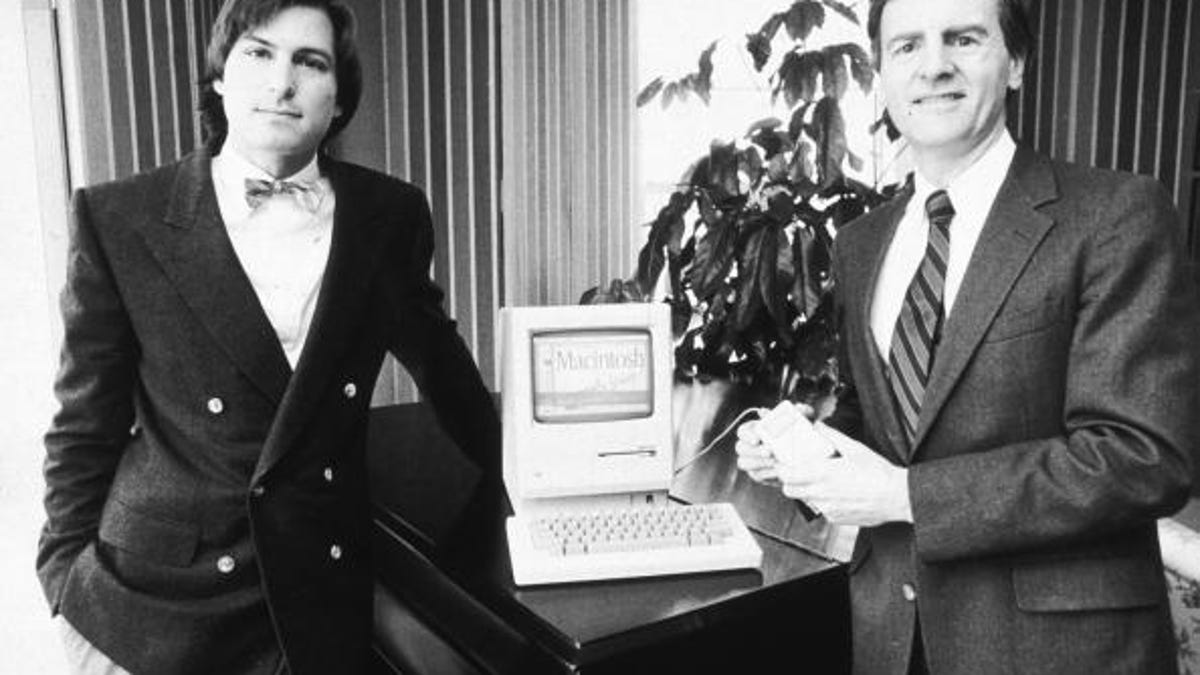Former Apple CEO John Sculley recalls the Macintosh launch
<b>guest post</b> Sculley stood behind the curtain with Steve Jobs moments before Jobs was to go on stage. Jobs was terrified, Sculley says, but once he took the stage, his presentation mastery took over.

John Sculley was recruited from PepsiCo by Steve Jobs and the board of directors to become the CEO of Apple. He joined the company 10 months before the 1984 launch of the Macintosh and remained CEO for a decade. Sculley shares his recollections of the day the Macintosh made its public debut.
This article is part of a CNET special report on the 30th anniversary of the Macintosh, looking at the beginnings of Apple's landmark machine and its impact over the last three decades.
There is justifiably a lot of excitement around the 30th anniversary of the launch of the Macintosh computer. I experienced the machine go from an idea in Steve Jobs' mind's eye to a product that eventually became a metaphor for the entire age of knowledge work productivity, opening the minds of people around the world to the incredible possibilities of individual creativity.
Bringing the Macintosh to life was a technical and organizational challenge. As we were getting ready for the launch, there had been fierce competition between the Mac and Apple II groups. Shortly after I arrived at Apple on April 6, 1983, I had appointed myself as head of the Apple II Group and moved my office to the Triangle Building where the organization resided.
While the Mac was getting established, Apple's only positive cash flow until 1986 needed to come from the aging Apple II.
Steve constantly referred to the Apple II team as "bozos" (not a compliment in Steve's eyes). I found this strange because our customers loved the aging Apple II, Steve was a co-creator of the original Apple II, and the Apple II team was actually doing some incredibly good development and marketing work behind the very successful new Apple IIe we had launched just months earlier.
In December 1983, Ida Cole, an Apple II executive, led a group of Apple II people who gave up their Christmas holidays to help the Mac team pack boxes of 128k Macs for first customer shipment to Drexel University, a member of the new Apple University Consortium. This was especially memorable because it showed that, in the end, we were all-for-one, and one-for-all at Apple.
The day before the Mac launch at Flint Center at DeAnza College in Cupertino, Calif., was pure chaos. Demos weren't working right, Steve was constantly changing his introductory script, and the auditorium was filled with over a hundred workers. Many of these workers weren't Apple employees. They were stagehands, engineers from the 40 television crews setting up their equipment, and, of course, lots of people from the Mac team.
Pat Sharp, Steve's assistant, had gotten him a strange, large organic greens drink from his favorite restaurant, The Good Earth, that he sipped on. Steve was in a constant mood swing. One moment he was laughing and joking with a Mac engineer. The next moment he was yelling at everyone in sight that the whole event plan looked liked pure sh*t.
Around 11:45 that night, Steve Capps finally got the Macintosh animation to work properly on the demo machine. Technically, this was an amazing feat for an 8 MHz Motorola 68000 microprocessor, and Capps' software design was incredible. Like everyone in the room, I just stopped and watched as the projection on the big screen showed the words "Macintosh" crawl across the computer's display.
Then came the most important piece of all, which Steve wanted to be a complete surprise. This was the part of the software demo when the Mac would actually say "hello" to the audience and thank Steve for being like a father to him. During rehearsals, we didn't project this software demo on to the screen because Steve was adamant about it remaining a total secret until the actual event.
Steve's presentation talent was legendary. He rehearsed over and over every gesture, word, and facial expression. Yet, when he was out there on stage, he made it all look so spontaneous.
You may be surprised to learn that as Steve and I stood behind the curtain moments before he was to go on stage, Steve was terrified. "I'm scared sh*tless," Steve whispered to me. "This is the most important moment of my entire life. Everything I have dreamed about and worked on for years will actually happen in the next few moments."
Steve was standing in the shadows behind the curtain, sneaking a look out at the audience. The room was packed. The first three rows of seats were reserved for the 100-person Mac team. To the right of us was a large platform with probably a dozen TV cameras. Off to the side were another dozen TV cameras. All around the stage area were many more TV cameras waiting for Steve to appear.
Steve started to shake almost uncontrollably. He was wearing a gray blazer, white shirt, and a green bowtie. His black hair was long and flowing. At just 27 years old, he looked handsome and more like a Hollywood celebrity than a Silicon Valley geek. "I am so scared," he repeated. "I'm not sure I can talk."
I grabbed him firmly in a big hug. "Get over it," I said. "You are Steve Jobs. You have told us you are about to change the world. Now go out there and do it."
The rest is history.



